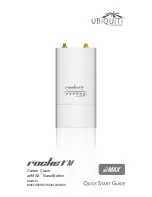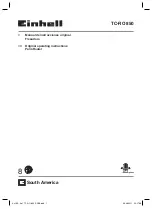
7 Operation on xDSL accesses
59
ARGUS 152
SNR margin
Signal-to-noise ratio in the bands used in dB.
The SNR margin is a measure of how much additional noise the
transmission can stand and still maintain a bit error rate (BER)
of 10
-7
. The value is considered a reserve against interference
signals.
Bands not used are indicated with n/u.
Loop attenuation
Attenuation on a line over the entire length and bandwidth in
dB. From a specific attenuation on, certain access types are no
longer recommended. However, it is better to compare
individually calculated attenuation values that are
recommended for specific access types with the dB value in the
HLOG graph, at 1 MHz (cursor).
Bands not used are indicated with n/u.
Signal attenuation
Attenuation of the signal in dB in the corresponding bands.
Bands not used are indicated with n/u.
Output power
Output power in dBm with reference to 1 mW.
Interleave delay
The delay (in ms) due to interleaving of data blocks.
Inpulse noise prot.
INP describes the quality of the protection against pulse
interference. The number of consecutive DMT symbols that can
be completely distorted without causing errors in higher layers.
FEC
Forward error correction
Number of transmission errors corrected using the checkbytes
of a codeword.
f (far):
Errors that the DSLAM detects and passes to
ARGUS.
n (near):
Errors that ARGUS detects in the transmitted
blocks.
CRC
Cyclic Redundancy Check
The checksum of the superframes transmitted by the remote
station does not agree with the locally calculated figure.
Possible causes: line interference.
f (far):
Errors that DSLAM detects and passes to ARGUS.
n (near):
Errors that ARGUS detects in the transmitted
blocks.
ES
Errored seconds
Number of seconds containing one or more erroneous sync
words and/or one or more CRC anomalies.
SES
Severely errored seconds
Number of seconds containing one or more erroneous sync
words or at least 50 CRC anomalies.
LOSS
Loss of signal seconds
Shows the number of LOS errors in one second.
















































